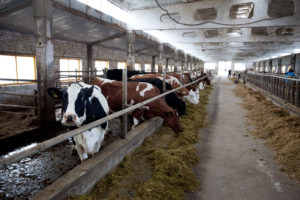NASA: Argentina is carbon positive

Traditional approaches to measuring carbon dioxide, based on counting and estimating the amount of carbon dioxide emitted by all sectors of the economy, such as transport and agriculture , have been used for years. This made it possible to assess progress in efforts to reduce emissions.
But its development misses a more important part of the story: the incorporation of carbon dioxide into the soil. The top-down approach, in which different activities are seen as part of a cycle, makes it possible to differentiate different types of economic output.
The study, published in Earth System Science Data using measurements made by NASA's Orbiting Carbon Observatory-2 (OCO-2) mission, offers a new perspective by tracking both fossil fuel emissions and overall changes in the "carbon stocks" of ecosystems, including trees, shrubs and soils.
This data is especially useful for monitoring land cover fluctuations in carbon dioxide. Although the OCO-2 mission was not specifically designed to estimate emissions in individual countries, greenhouse emissions results were obtained from more than 100 countries.
The conclusion is that Argentina is one of the few countries with a positive balance (green) due to carbon sequestration in grasslands.
But the importance attached to animal husbandry in Argentina. Animal husbandry in Argentina is part of the natural ecosystem and is one of the activities through which Argentina's agriculture plays an important role in controlling photosynthesis and removing carbon dioxide from the atmosphere as part of the natural carbon cycle.
The process occurs at the expense of cows, which feed mainly on natural pastures. These food resources absorb carbon dioxide from the air as part of the natural ecosystem through photosynthesis. Cows digest the carbon in the grass, releasing methane into the atmosphere. But the methane they emit is "created" from the carbon of the grass they consume, and lasts 10 to 12 years in the atmosphere. After this time, the methane is converted into water and carbon dioxide. One that is naturally absorbed through photosynthesis by natural pastures. And so the cycle repeats over and over again. This is a pure natural process.
Argentina is one of the countries with the largest area of natural pastures on planet Earth. It is among the top five countries with the highest availability of this resource.
On the other hand, Argentine animal husbandry is one of the few activities that allows the conversion of vegetable protein unsuitable for human consumption into animal protein of high biological value for human consumption.
Read together with it:
- Farmers at Rogoznyansky JSC in Zhabinka District increased their grain yields by more than a third.September 25, MINSK . JSC Rogoznyansky in Zhabinka District increased its grain yield by more than a third. A cold spring and rainy summer didn't prevent the agricultural enterprise from reaching yet another high. As Anna Plytnik, DIRECTOR of the joint-stock company, told the magazine "Ekonomika Belarusi," this season they harvested more than 7,......
- Rising Meat Prices and Dairy Shortages in Greece: Causes and ConsequencesProblems in the dairy industry Dairy products are the basis of Greek cuisine and its variety includes yoghurts, cheeses , butter andIce cream . However, in recent years, the Greek dairy industry has been in crisis . A decline in the number of farmers and a decrease in the number of cows has led to a decrease in the volume of fresh MILK available for processing. This is creating a shortage, threate...
- The advanced farm of JSC "Gorodilovo" uses the work of scientists and rewards with a trip to the seaTopic newsHow knowledge of market conditions, achievements in genetics and modern technologies helped JSC "Gorodilovo" to become one of the best The President of Belarus expressed gratitude to agricultural workers in the MINSK region and Minsk district, as well as to the teams of six agricultural enterprises, including Gorodilovo JSC. This is not the first time the enterprise has received such a h...
- Ruzilya Latypova from Tatarstan won a prize in the competition for the best in the profession among machine milking operatorsThe 29th All-Russian competition for the best in the profession among machine milking operators of cows in 2025 was held in the Vladimir region. The competition was held among 58 specialists from 49 entities based on the farm of AO Shikhobalovo in the Yuryev-Polsky district and at the Vladimir Agrarian College of the Suzdal district. Maria Zubova from the Vologda region became the absolute champio...
- District-scale project: turnkey heating mains are manufactured in DyatlovoIf you, like most Belarusians, consider the Dyatlovo District of the Grodno Region to be agricultural, you should know: this is a mistake. it is industrial. And the small town itself, which is located far from major highways and railways, is a city that has twice been recognized as the best in the country for doing business. BELTA correspondents went to the west of Belarus to understand why invest...






























































